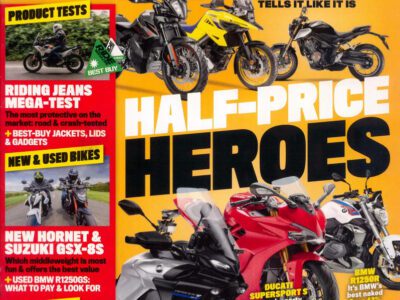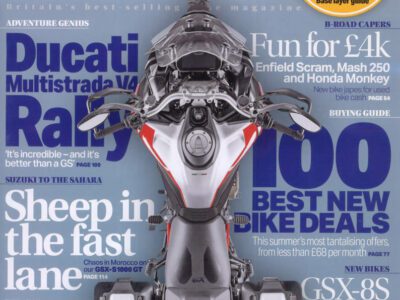Here’s an example: a rider was cut up on a two lane motorway slip road, which was narrowing to one lane. A sporty Mercedes muscled his way into the narrowing gap and came within a whisker of hitting the rider at about 80mph. Our man responded by chasing after the Mercedes driver who got caught in slow moving traffic further up the motorway. Homing in on the Merc our rider employed hand gestures suggesting the driver may prefer the affection of his hands to the love of a good woman.
Unfortunately, at that point, the Mercedes was forced to brake for a vehicle jumping from lane two to lane three, the rider clipping the Merc and falling off as a result. Picking himself up off the ground the biker flew at the Mercedes driver with the venom of a wronged and righteous man. Of course what witnesses saw was a car driver trying to escape a wildly gesticulating rider. There was also gantry footage of the rider sitting up the Mercedes’ exhaust for close to a mile, both hands rarely on the bars. Our rider’s rage led to a 12 month ban and a compulsory retest.
While this is an extreme case, control of emotional response on a bike is essential for safe riding. From a purely legal perspective we can see what happened to our angry rider. He committed the offence of dangerous driving and was banged to rights. Responding to provocation is an aggravating factor in dangerous driving. It is not any sort of legal justification, even though I am sympathetic to this natural response.
The natural response to a life threatening situation is fight or flight. In a dangerous situation the rational part of the brain is the plains of Africa, less so for Milton Keynes or Paisley. Be aware of your own adrenalin charged response and try to manage it. If cut up or endangered by another road user, try hard to avoid the temptation to remonstrate. Think about it logically: the driver is a bell end or a poor driver who is sat in a safety cage.
Gestures and riding close to him endangers you and will teach them nothing. You will either get a panicky or aggressive response back, both of which are more dangerous to you than they are to the driver. Let it go and think happy thoughts. Reflect (off the bike) if you could have avoided the situation because you can’t change another person’s driving, but you can adjust yours. Do this and you won’t find yourself in front of the beaks fighting to keep your licence.
Andrew Dalton
Bike Magazine – November 2014












Leave a Reply